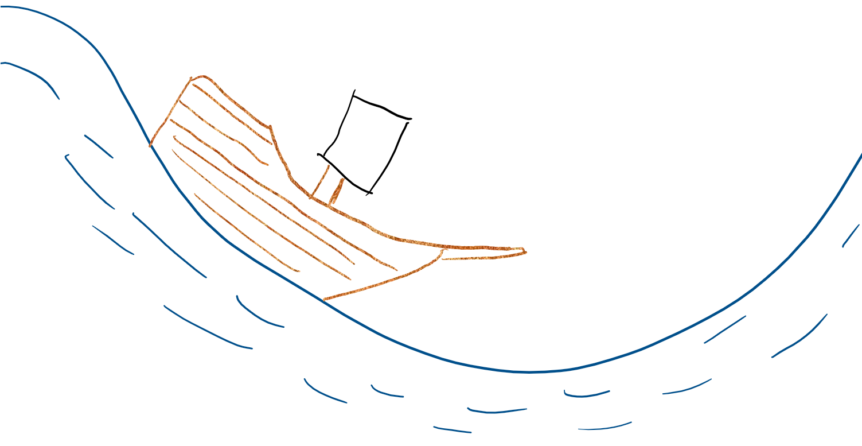It’s an expression you’ve heard before. “Riding out the storm.” Usually it’s quite literal: families staying at home during a hurricane, huddling in the living room around the fire during a blizzard, and so on. But the idiom comes with a much more literal background. In naval excursions, particularly over long distances and upon the ocean, storms can reach peaks dozens of feet higher than the trough proceeding waves. But in the instance of ships, surviving such violent storms demands more than simply buckling up and letting it pass. Crews would have to work feverishly throughout the storm to adjust tack, trim sail, and attend to any number of tasks to keep the ship afloat and on course. It was literally a matter of life and death.
This week, we’re not faced with life and death decisions, but more applicably to you we examine what you should be doing during intense market volatility. Often investment managers will correctly state that the most important thing you can do is not panic and sell during a downturn. But that doesn’t mean you should be sitting on your hands. More importantly, your financial planner shouldn’t be sitting on their hands! Here are three things your financial planner should be doing to help you ride out the storm:
Rebalancing
Rebalancing is the act of adjusting a portfolio back to its original risk-reward parameters. This means if your portfolio was 50-50 stocks and bonds, during a normal market period the stocks might grow up to make up a 55-45 ratio within the portfolio. This exposes your portfolio to risk and opportunity. The risk is that because the ratio has skewed further toward stocks, any downturns would be more greatly pronounced and harmful. The opportunity is that the stocks outpacing the bonds gives you the chance to buy bonds at a lower price with the newly appreciated stocks. The same principle holds, but even more-so, during a downturn. Often during a growing market, bonds will rise slowly and steadily while equities will spike upwards much more quickly (albeit inconsistently). Conversely, during significant downturns, as stocks decline, bonds will increase the speed of growth because as people panic and sell out of equities, their money will often move over into bonds, increasing their value due to the demand. The act of rebalancing then increases the value of the transaction. Rather than selling over-appreciated equities to buy slightly appreciated bonds, you’re selling over-appreciated bonds to buy equities at a deep discount. Riding out the storm while making a profit in the classic “sell high buy low” style is smart money management.
Tax Loss Harvesting
This strategy only applies if you have non-qualified (non-retirement) investments. In this instance if you have interchangeable investments, for example owning a S&P500 Index fund, you can sell out of one version of the fund and buy another. Doing so while the fund is trading at a loss, allows you to book a taxable loss while remaining fully invested in the same set of investments. This creates a loss that can then be used to offset income and future profits in your portfolio, thus allowing you to take advantage of the growth of your investments and income at a reduced tax rate. It’s a great strategy because it allows you to make money via tax reduction during a time that you might normally think as “losing money”.
Talking to You
This point likely seems silly, but I assure you, it’s not. The number one complaint I hear from new clients who have worked with a financial advisor in the past is that they can’t recall the last time they talked to their financial advisor. In circumstances like this, the planner might say they’re helping their client by riding out the storm, but chances are they’re asleep at the wheel. Studies have shown that up to 2% of annual return a financial planner can provide for a client is in the form of controlling emotional turmoil during market activity, and keeping them focused on their long term goals. Your financial planner knows you, but it’s important that they’re communicating with you and keeping you up to date on what’s happening in the marketplace and more importantly, what’s going on with your life savings.
Summing it Up
Riding out the Storm is as active a job for a financial planner as it should be a passive activity for you. It is important to stick to your long-term strategy, stay locked on your objectives, and to avoid panicking or giving into the temptation to get scared by financial news networks. A much more productive activity than panicking is instead to check to make sure your financial planner or advisor is doing their job, and isn’t simply asleep at the wheel. How do you verify this? See if they’ve performed any rebalancing or tax loss harvesting in the past three weeks. If there’s nothing other than an advisory fee as the activity on your account, it’s time to find a new financial planner, because they’re asleep at the wheel, and your ship is going off course in a storm.

